- Learning time
- 60 minutes
- First play time
- 180 minutes
Blackout: Hong Kong
Designed by: Alexander Pfister
All of Hong Kong’s power has gone down and you, the players, are left with the task and getting the systems up and running again. Naturally, you do this by playing cards!
Blackout: Hong Kong is played over a variable number of rounds in which you add more cards (representing team members) to your individual deck as the game progresses, furthering your progress. How that progress manifests is both the cards themselves (which score points) and your presence – in cube form – on the board, which represents the electrical grid of the city. Your team can combine to reboot the network by both reestablishing connections (A to A, B to B and so on) and securing a district by surrounding it with cubes of your own colour on every connection.
It’s a fairly complex game but we’ll attempt a brief overview here. The game is played over a number of phases. First, the starting player rolls the resource dice to determine what resources are available for this round: food, water, first aid, gasoline, books and tools). Then players choose three cards to play on this round and place them face-down in the three available ‘slots’ beneath their individual player boards. Player by player, these cards are revealed and ‘actioned’ – either gathering resources (by playing volunteer cards that match the dice colours of red, blue and yello) or spending said resources (by playing the purple specialist cards). The specialist cards all have a pretty straightforward explanation on them of what they do, and it’s usually generating money or improving your situation on the main board.
Following the headline act of the cards, however, there are a number of further phases: you can activate more volunteers or specialists by paying the price on the card and moving them from your Objectives area on your player board (you start the game with two here, but there are three slots in total) and into your hand. You can pay for more (potential) volunteers/specialists by moving them into your Objectives area from the supply. And you can get rewards on the main board by ‘scouting the area’ and claiming a rewards tile from a district, granting you more resources or money. There are two catches here, though: the first is that to claim the reward, your cards need to match the Search number on the tile. Most cards have a search number of one, so hitting a reward of 12 or higher can be difficult.
The second catch is that this is, apparently, dangerous work, and always ends up with one of your team in the hospital. The only way to get them back out is to play your doctor, but of course you may have played your doctor already. However, if you’re running low on cards at the end of a given round, you can pick up all cards in the most-populated slot and return them to your hand. Gathering your team like this can potentially trigger even more rewards (called check-mark actions; these also pop up in the draw deck as purchasable objectives) but we’ve probably reached cognitive overload already… except to say, if you’ve connected a route or surrounded a district, there are rewards for that too!
After the draw pile for the objective cards run out, the game will be over at the end of the current round. Players score money for resources, then convert money into points ($5 = 1point). All active team members (in slots or hand) score their points value, but team members in the hospital get nothing!
The guru's verdict
-
Take That!
Take That!
There's very little direct interaction - almost none in fact. Potential frustration only arises in turn order being, occasionally, pivotal in reaching a connection first or snapping up an objective.
-
Fidget Factor!
Fidget Factor!
Very high on a first play. Dropping to moderate, as you juggle the possibilities of what-cards-in-which-slot along with the situation on the main board.
-
Brain Burn!
Brain Burn!
It's kind of a deck-building game because creating a hand of great cards means you can pull off some great moves as the game picks up speed. But you don't want to neglect the board either, and the (briefly-mentioned above) check-mark bonuses can be helpful too... a game of juggling.
-
Again Again!
Again Again!
If you like the cognitive challenge here then Blackout will give you numerous plays before you feel it's exhausted.

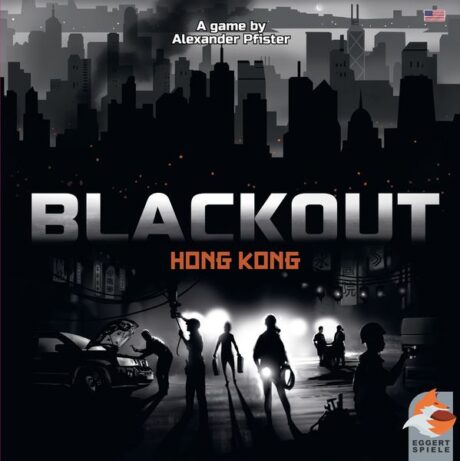

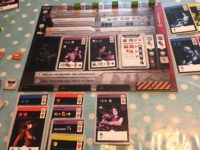
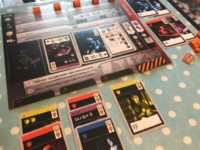
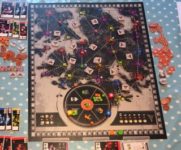
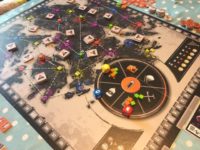



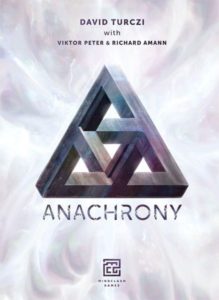

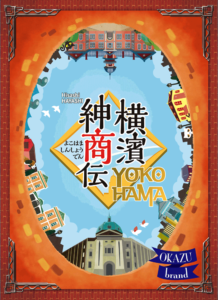
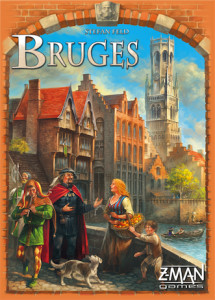
Sam says
I have some questions - why Hong Kong? Why, come to that, a blackout? Designer Alexander Pfister has created a mechanically clever system here but whereas his previous game Great Western Trail was, at times, thematically suspect, in Blackout it's kind of nuts. For a start, I'd hope that if and when Hong Kong does blackout, the people charged with getting things going again work co-operatively rather than competitively. I'm not entirely sure what is happening on the main board other than a vague sense of 'making connections' and the individual player boards are slaves to a draconian numbers system where only three or four people can ever work at the same time and anyone venturing into the city risks ending up in medical care. On top of that, the board and cards that look striking from a distance are, close up, aesthetically underwhelming. That said, what Blackout does do successfully - perhaps even because of its idiosyncratic approach - is convey a sense of wrestling with something initially beyond your control: both the mystery of the blackout itself and wrangling your team as they hurtle up to whatever building your board is meant to represent, hurtle away again and find themselves almost inevitably hospitalized. I'm not sure how seriously we're really meant to take any of this (the story I mean; obviously one shouldn't take the game too seriously) but there are definite moments of absurdity, not least in that if you have too much of one resource, you can simply spend a truck to turn it magically into something else. It's bonkers, and I'm not sure how this game, mechanically speaking, ended up with this theme. There's probably a great story in that, but I'm not convinced this is a great game - at least, not for me.